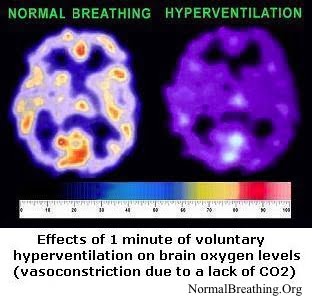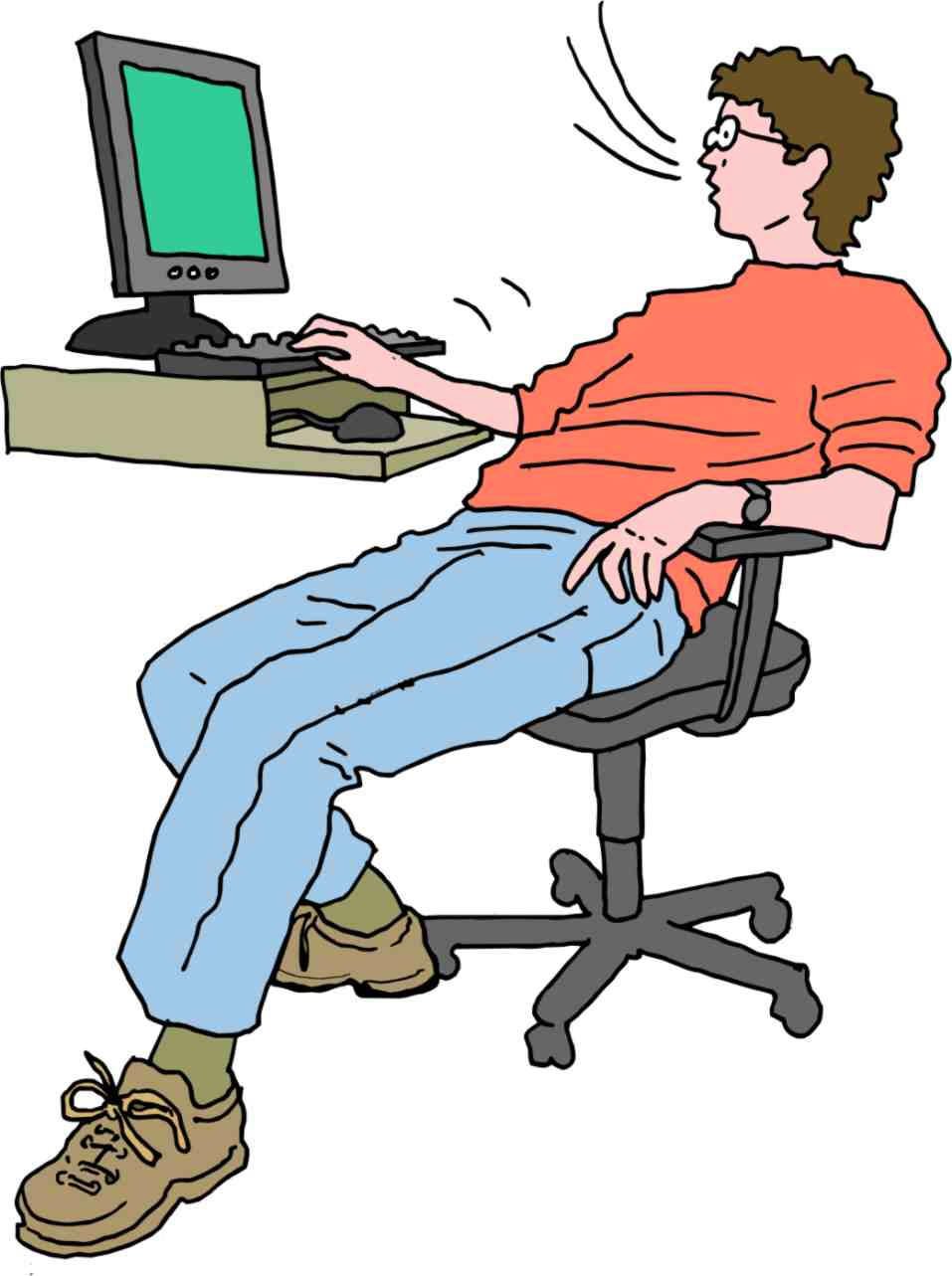- Updated on September 13, 2020
![]() By Dr. Artour Rakhimov, Alternative Health Educator and Author
By Dr. Artour Rakhimov, Alternative Health Educator and Author
- Medically Reviewed by Naziliya Rakhimova, MD
Slouching and Bad Posture Cause Low Brain and Body O2

 Slouching shoulders, while seemingly relaxing, leads to stress and tension in various muscles. Bad posture also causes chest breathing and low body O2. Since the diaphragm provides nearly maximumoxygenation of the arterial blood (due to gravity, blood flow at the bottom of the lungs is about 6 times stronger than at the top), it leads to reduced blood oxygen levels. Indeed, people who slouch always have chest breathing since their abdominal organs are compressed.
Slouching shoulders, while seemingly relaxing, leads to stress and tension in various muscles. Bad posture also causes chest breathing and low body O2. Since the diaphragm provides nearly maximumoxygenation of the arterial blood (due to gravity, blood flow at the bottom of the lungs is about 6 times stronger than at the top), it leads to reduced blood oxygen levels. Indeed, people who slouch always have chest breathing since their abdominal organs are compressed.
Their chest breathing also prevents normal lymphatic drainage of the lymph nodes from all organs located under the diaphragm. This is another vital function of the diaphragm.
Most of all, bad posture shoulders make breathing deeper and faster leading to chronic hyperventilation that causes low body-oxygen content, poor body-oxygen test results and … more. What are the reasons?
Body O2 and slouching
 The clinical experience of over 150 Russian doctors shows that slouching intensifies breathing causing a lack of CO2 in the lungs and arterial blood. I found the same effect with 100s of my breathing students.
The clinical experience of over 150 Russian doctors shows that slouching intensifies breathing causing a lack of CO2 in the lungs and arterial blood. I found the same effect with 100s of my breathing students.
Since CO2 is a potent vasodilator and required for the Bohr effect, bad posture immediately reduces O2 levels in body and brain cells. This promotes any chronic disease since chronic diseases are based on tissue hypoxia. It is normal then that some people can experience chest pain, angina pain, exacerbations of digestive problems, heart palpitations and arrhythmias due to slouching. Hence, they should stop slouching their shoulders.
 Since less than 10% of modern people have normal breathing parameters and normal results for the DIY body oxygen test (see Homepage for clinical facts), it is not a surprise that most modern people have bad posture, and that slouching shoulders is a norm in public schools, universities, libraries, and other places. However, if you watch old movies and investigate old pictures and photos, you can notice that the people of those times had a good posture with no slouching naturally.
Since less than 10% of modern people have normal breathing parameters and normal results for the DIY body oxygen test (see Homepage for clinical facts), it is not a surprise that most modern people have bad posture, and that slouching shoulders is a norm in public schools, universities, libraries, and other places. However, if you watch old movies and investigate old pictures and photos, you can notice that the people of those times had a good posture with no slouching naturally.
Furthermore, the problem is even worse in the sick, since their heavy breathing makes muscles even more tense and oxygen deficient. As a result, the sicker the person, the stronger the slouching. To stop the shoulders from slouching is easy with breathing retraining. At higher body-oxygen levels, correct posture becomes normal naturally.
Generally, people stop slouching when they get over a certain number of seconds for their morning CP. However, when a person has a bad posture, his breathing gets worse and the CP drops.
As a result, there is an accurate relationship between body-oxygen levels and chances of slouching. Breathing parameters of a person (body oxygenation in seconds, minute ventilation, and respiratory frequency) and his chances to slouch are connected with each other. You can find out the table that provides this link. The table is located just below here as your bonus content.
| Body-Oxygen Level | Minute Ventilation* | Chance of slouching |
| Less than 20 s | Over 12 L/min | Likely |
| 20-30 s | 9-12 L/min | Possible |
| 30-40 s | 6-9 L/min | Almost impossible |
| >40 s | <6 L/min | Virtually impossible |
* Minute ventilation for a 70-kg person at rest
[/sociallocker]
Conclusions. In order to stop slouching, one should learn diaphragmatic breathing and gradually change his or her unconscious breathing pattern. For more detail, visit the Section Learn with free Modules related to healthy lifestyle factors, simple techniques, and breathing exercises that increase brain and body oxygenation.
Related web pages:
– Chest breathing problems, tests, and solutions
– Learn diaphragmatic breathing: Module 8 of the Learning Section.

